Experts say consistent definition and key principles will help advance restorative aquaculture
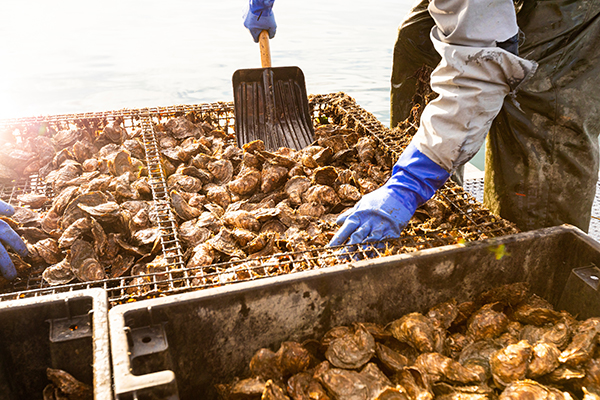
On November 9, 2021, The Nature Conservancy (TNC) released a new study, The Global Principles of Restorative Aquaculture, to aid in the implementation of its best practices. Led by an expert working group, the 81-page report sets out a standard definition and global principles for restorative aquaculture, which were agreed upon by scientists from leading international organizations. The definition and guidance apply to large and small-scale operations, including freshwater (inland) and marine (coastal and offshore) aquaculture and are not limited in geographic scope.
“Aquaculture is one of the most environmentally efficient ways of producing animal protein,” said Robert Jones, global lead for TNC’s aquaculture program, during an online event. “The recent science shows clear evidence that aquaculture can be compatible with traditional restoration efforts with a financial return. But we need to develop a common understanding and broader uptake of these concepts on the ground. That’s the intent with our [report].”
The latest research affirms that aquaculture can help restore ocean health, as well as support economic development and food production in coastal communities worldwide, provided that “the right practices are deployed in the right places.” However, a “clear pathway for implementation” is vital to success. Setting standards can help “drive clarity and support necessary scaling,” as well as “provide implementation guidance, establish parameters, and forge a common understanding for this important ocean restoration solution.”
“Producing food through aquaculture is an underdeveloped opportunity,” said Jones. “Seafood accounts for 2 percent of human food, even though 70 percent of our planet is made up of water.”
As noted in TNC’s recent report Foodscapes: Toward Food System Transition, an expansion of restorative aquaculture and improved management of wild fisheries could sustainably increase aquatic foods by 36 to 74 percent by 2050, making aquaculture a key part of transitioning toward “a food system that works with nature.” In a webinar hosted by TNC, a panel of experts discussed the study’s implications for the aquaculture industry.
Setting the stage
According to TNC Global Aquaculture Manager Tiffany Waters, emerging evidence is challenging the assumption that increasing food production automatically results in the degradation of nature. In the case of aquaculture, it’s possible to simultaneously produce nutritious food and actively contribute to the recovery of ecosystems. It’s also possible to be environmentally efficient: For instance, the production of bivalves and seaweed requires almost no feed, freshwater or land and results in minimal greenhouse gas emissions, making it a near-zero input form of farming.
“We want to synthesize that current science and describe the key benefits that can result from restorative aquaculture and present it in a way that feels accessible,” said Waters. “Greater engagement with this concept creates an opportunity to not only improve the health of our marine and freshwater ecosystems but also do so while producing food and sustainable livelihoods.”
TNC: Restorative aquaculture can improve marine habitats, biodiversity
Waters reported that there’s been an “exciting” uptick in interest in restorative aquaculture and the benefits it can provide, but without further guidance, there is a risk of “misinterpretation or inconsistent application of the concept.”
“Establishing a clear definition provides much-needed clarity for all stakeholders,” said Waters. “By providing the definition, identifying the core principles and establishing environmental benefit roadmaps, we hope to motivate actors to engage restorative aquaculture and encourage support, policies and market-based approaches to support its development.”
As a consistent definition, restorative aquaculture occurs when “commercial or subsistence aquaculture provides direct ecological benefits to the environment, with the potential to generate net-positive environmental outcomes.” But Waters said that determining whether an aquaculture operation results in a net benefit to the environment is “incredibly complex,” leading TNC to introduce a set of six clear principles and implementation roadmaps to guide industry, governments and communities.
“We outline roadmaps for water quality, habitat, carbon sequestration, and ocean acidification buffering,” said Waters. “Each roadmap [has] a series of ‘yes’ or ‘no’ questions guiding the user towards the likelihood of restorative benefits based on the responses.”
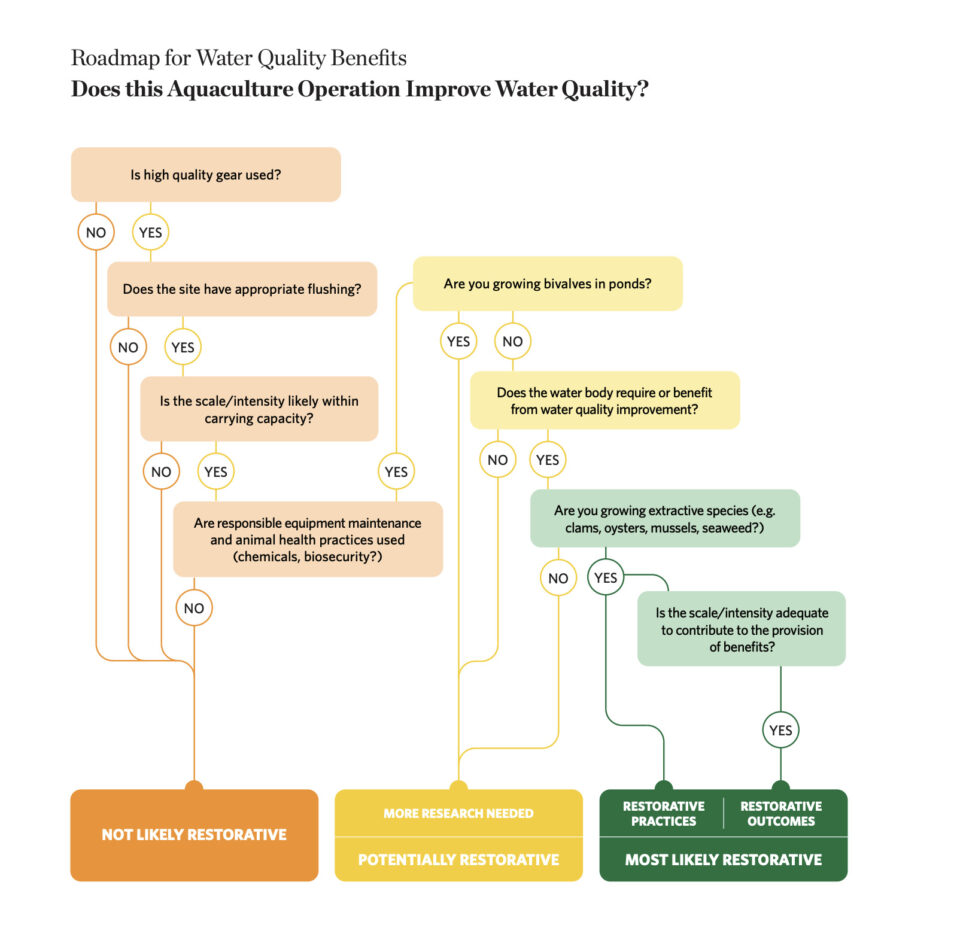
Working through the roadmaps – which were created with a cross-functional group of scientists – users are directed to a final assessment of “not likely restorative,” “potentially restorative,” “needs more research,” or “most likely restorative.” Further explanation and key resources are provided in the next stage of the roadmap. Waters said that the roadmaps can be a tool for assessing the likelihood that an aquaculture operation is providing ecological benefits and meeting the definition of restorative.
Creating ‘a common language’
Discussing the study’s value, panelist Dr. Gary Fleener from Hog Island Oyster Company said that developing a consistent definition and key principles will be important for advancing restorative aquaculture.
“What this report gives us [are] some better tools for moving from the anecdotal to the analytical,” said Fleener. “To actually be studying these potentially beneficial outcomes and quantifying them.”
Dr. Heidi Alleyway, global aquaculture scientist for TNC, agreed that providing “a common language” offers a starting point for farmers, managers and regulators to collaborate. Likewise, Dr. Ling Cao from Shanghai Tong University said that “a more standardized concept will be really helpful” in achieving China’s national goals.
“The concept of restorative aquaculture has only begun to be mentioned in China,” said Cao. “However, this doesn’t mean that [it’s] new. China is promoting ecological aquaculture and sustainable green development of aquaculture in the hopes of maximizing the ecological and economic benefits while minimizing the negative impacts.”
The report also offers a fulsome picture of how restorative aquaculture can benefit communities and environments. Based on a global review and analysis of 65 studies, Alleyway said a body of scientific research “confidently” supports that restorative aquaculture leads to habitat and water quality benefits. In terms of mitigating climate change, aquaculture can also play a role: from breeding animals that have “climate resiliency baked into them,” as Fleener said, to potentially removing nitrogen from the ocean, as Dr. Barry Costa-Pierce from the University of New England suggested.
“The world is awash in nitrogen from many different sources and it’s going to the coastal ocean,” said Costa-Pierce. “That is causing a massive amount of bacterial respiration, which is producing CO2. Those CO2 levels build-up, particularly in bottom waters in stratified conditions, and when the ocean burps, CO2 that was sequestered in the bottom of the ocean is released. Anything we can do to remove nitrogen from the ocean will decrease CO2 concentrations in the atmosphere.”
“Absorption of nitrogen is vital, and restorative aquaculture is headed in that direction.”
A highlighted challenge was the ability of small-scale operators to take up restorative aquaculture. Specifically, how can it be made economically viable and beneficially at the farm level?
“Taking care of nature is good for the economy,” said Dr. Junning Cai, Aquaculture Officer at the Food and Agriculture Organization of the United Nations (FAO). “We need regulations, more conducive licensing processes, and supportive financial mechanisms, such as carbon and nitrogen credits, green financing, blue bonds, and so on. If you want a major breakthrough, you need collaboration between the private and public sector.”
According to Fleener, the costs of “going green” don’t automatically translate into a higher cost. In the case of bivalves or seaweeds, there are low-cost steps that can be taken to optimize restorative values.
“It’s not typically a high-cost proposition to, for example, subtly change the times that you access or have harvests,” said Fleener. “I think they’re eminently achievable but there needs to be a roadmap that everybody agrees upon – that these are the ways that we can produce our bivalves or seaweed and harness the benefits that they provide without doing significant impact.”
Ultimately, future success hinges on more scientific data and practical strategies to translate useful and large-scale ideas into implementable farm practices. As Cai said, private-public sector collaboration is also necessary to push restorative aquaculture to the next level. But the potential is there, and TNC’s report can help start the conversation.
“Every food production system on the planet has impacts,” said Costa-Pierce. “What we’re saying is direct these impacts towards environmental improvement and restoration and social benefits.”
Download the full report here.
Follow the Advocate on Twitter @GSA_Advocate
Now that you've reached the end of the article ...
… please consider supporting GSA’s mission to advance responsible seafood practices through education, advocacy and third-party assurances. The Advocate aims to document the evolution of responsible seafood practices and share the expansive knowledge of our vast network of contributors.
By becoming a Global Seafood Alliance member, you’re ensuring that all of the pre-competitive work we do through member benefits, resources and events can continue. Individual membership costs just $50 a year.
Not a GSA member? Join us.
Author
-

Lisa Jackson
Associate Editor Lisa Jackson lives in Hamilton, Ontario, Canada. Her work has been featured in Al Jazeera News, The Globe & Mail, The Independent, and The Toronto Star.
Tagged With
Related Posts
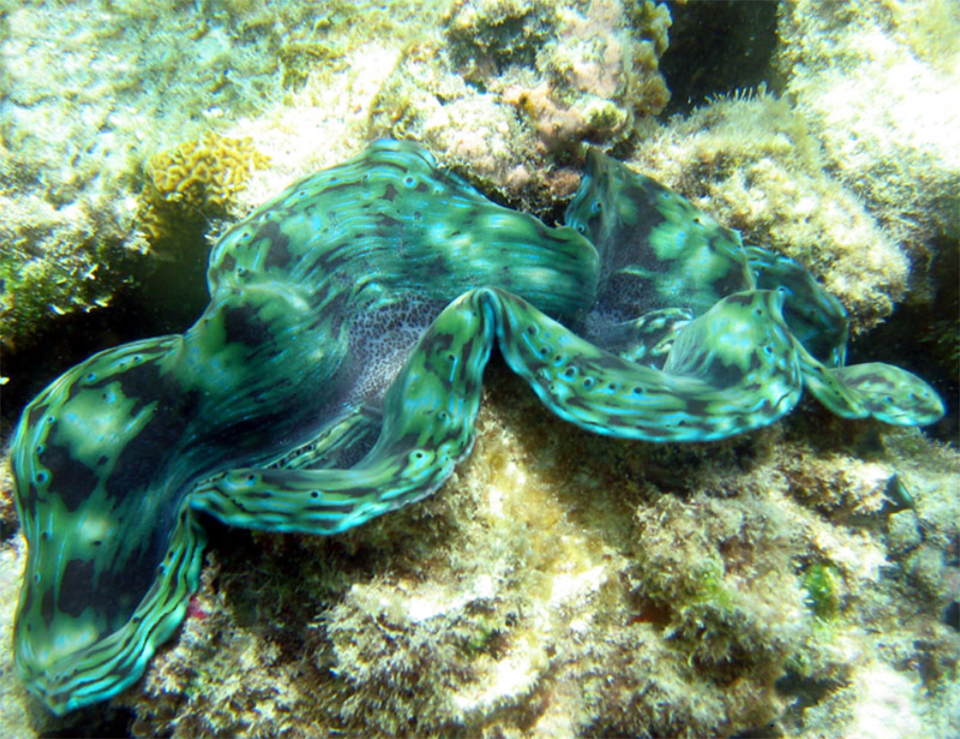
Responsibility
A global overview of restorative shellfish mariculture
A review of restorative shellfish mariculture case studies around the world to identify emergent patterns across species and ecoregions.
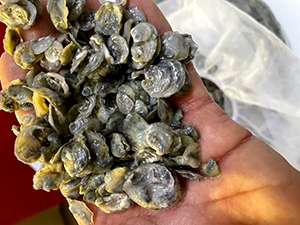
Responsibility
Orkney Islands hatchery engages in restorative aquaculture initiative
As part of a restorative aquaculture initiative, Orkney Shellfish Hatchery, a multi-species aquaculture hatchery in the Orkney Islands, has released its first stock of native flat oyster spat into the ocean.
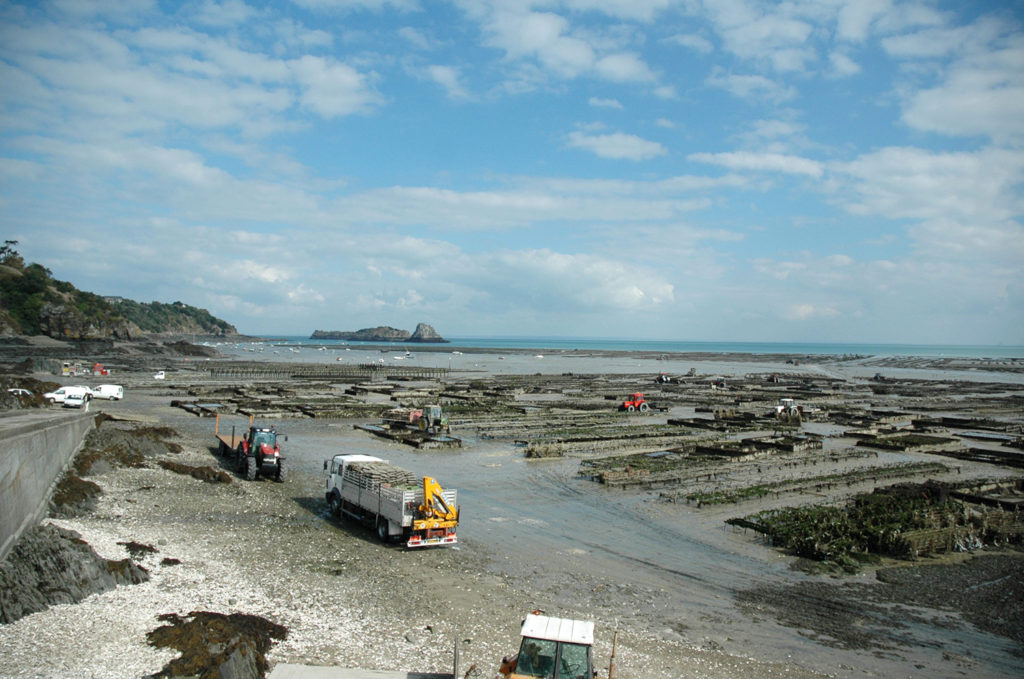
Responsibility
Identifying global opportunities for shellfish, seaweed aquaculture
Study identifies regions where commercial marine aquaculture may provide environmental and social benefits and potentially support ecosystem recovery.
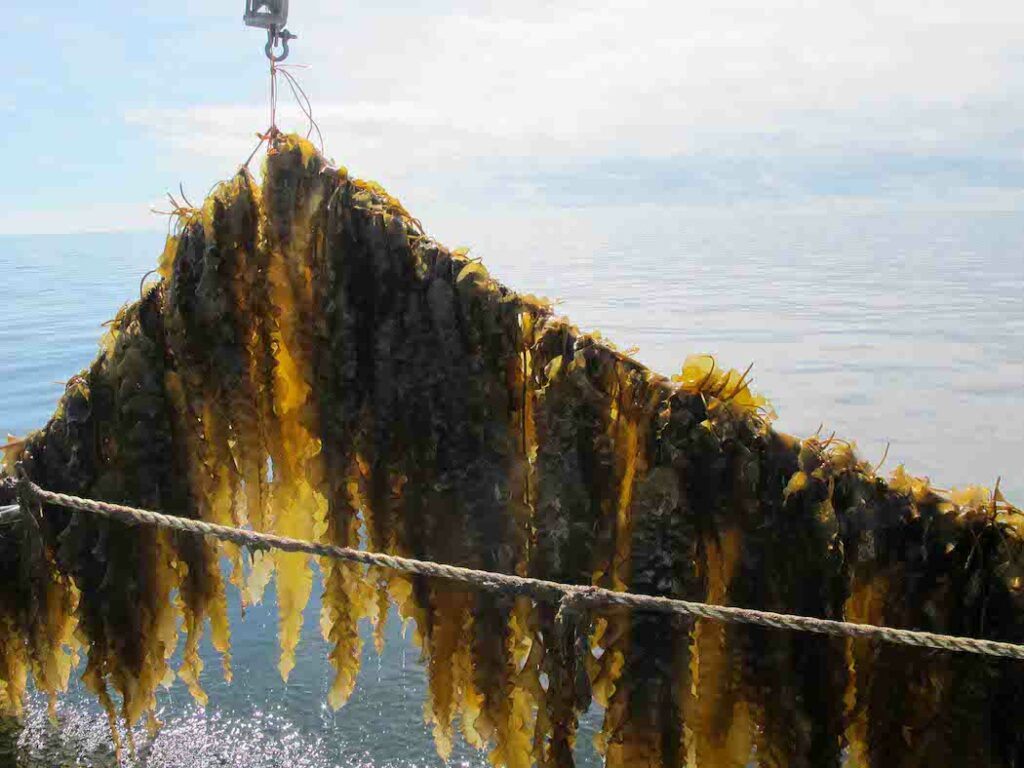
Responsibility
Pilot project cultivating kelp on shellfish leases demonstrates ‘extraordinary’ first year growth
A pilot project led by the Aquaculture Association of Nova Scotia has shown first-year success for cultivating kelp on shellfish leases in Nova Scotia.

